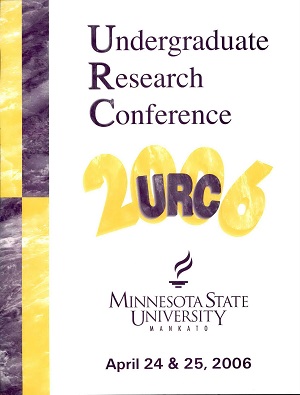The Intertextuality of Music
Location
CSU North Ballroom
Start Date
24-4-2006 1:30 PM
End Date
24-4-2006 3:30 PM
Student's Major
Communication Studies
Student's College
Arts and Humanities
Mentor's Name
Brian Klosa
Mentor's Department
Communication Studies
Mentor's College
Arts and Humanities
Description
Everyone loves music. People may have different styles and tastes but the undeniable fact is people love music. However because of the auditory nature of music, describing and communicating the love of music can be often prove difficult. Audiences often need a bridge to help them with the verbal explanation of musical styles. Poetry is often utilized to provide concrete language choices for abstract items like music. The following oral presentation will encompass various poetic and musical selections to showcase the verbal form. Additionally, the researcher will incorporate theories of performance study and research into the performance to assist the audience in understanding and appreciating the inter-textuality of music and the spoken word.
The Intertextuality of Music
CSU North Ballroom
Everyone loves music. People may have different styles and tastes but the undeniable fact is people love music. However because of the auditory nature of music, describing and communicating the love of music can be often prove difficult. Audiences often need a bridge to help them with the verbal explanation of musical styles. Poetry is often utilized to provide concrete language choices for abstract items like music. The following oral presentation will encompass various poetic and musical selections to showcase the verbal form. Additionally, the researcher will incorporate theories of performance study and research into the performance to assist the audience in understanding and appreciating the inter-textuality of music and the spoken word.
Recommended Citation
Anderson, Grant. "The Intertextuality of Music." Undergraduate Research Symposium, Mankato, MN, April 24, 2006.
https://cornerstone.lib.mnsu.edu/urs/2006/poster-session-C/5



